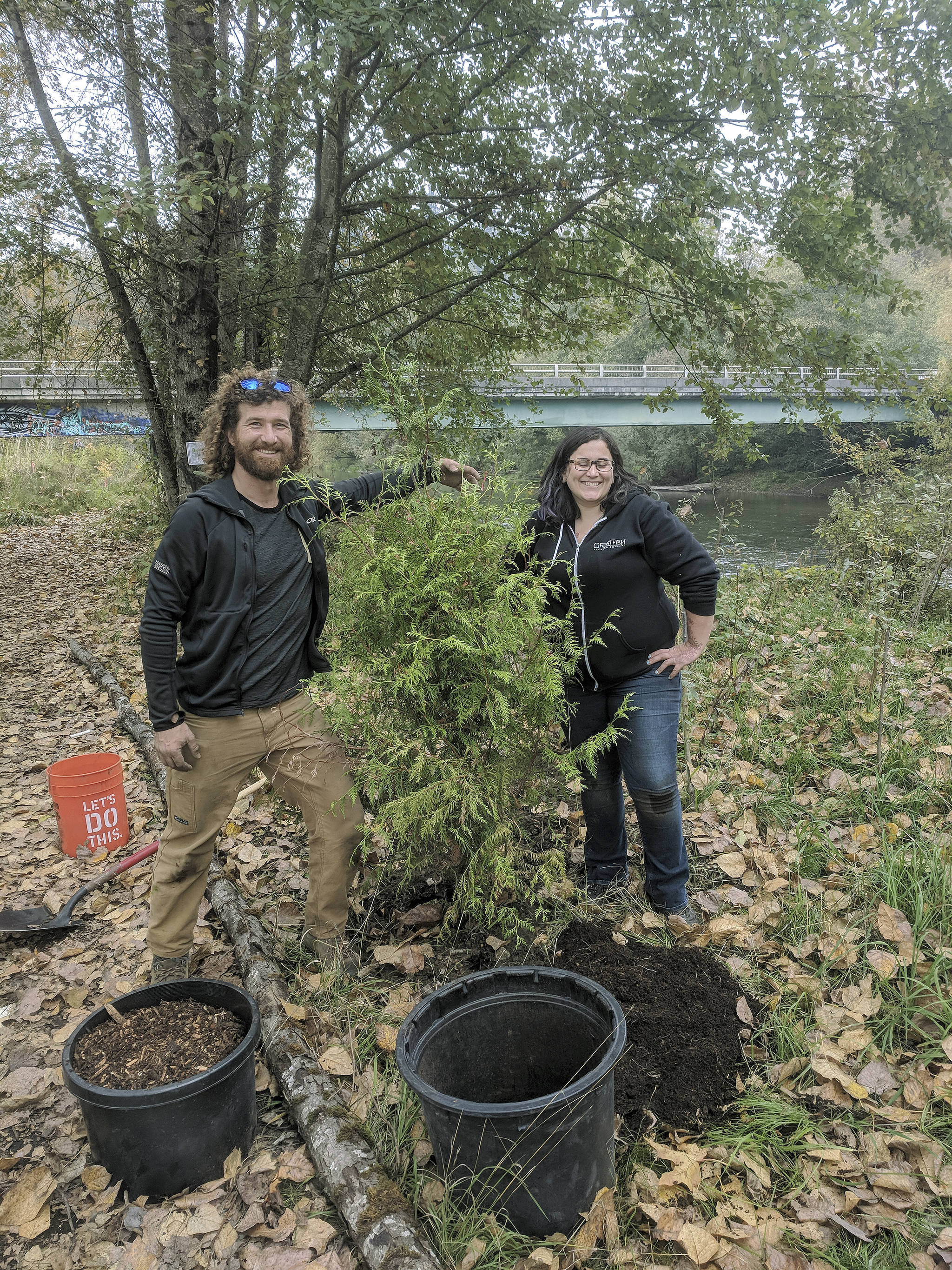For the Reporter
Salmon recovery efforts in King County watersheds recently received more than $4.6 million to support dozens of high-priority projects, including restoration work on the Green River in Auburn.
Cooperative Watershed Management grant funding, which the King County Flood Control District provides, is to go to projects that local governments, tribes and stakeholders have agreed upon as top priority for recovering salmon and improving overall watershed health.
“The hard work of our partners and continued investments in actions to protect and recover salmon are vital, so that we can start to see salmon numbers rebound,” said Cindy Spiry, director of the Snoqualmie Tribe Department of Environmental and Natural Resources, and Snoqualmie Watershed Forum chair. “We applaud the Flood Control District for supporting this good work.”
“This funding exemplifies why it’s important to work together, across city, county, and flood control district boundaries, to identify the most important actions to take to save chinook salmon and orcas,” said Dennis Robertson, a City of Tukwila Councilmember and WRIA 9 Watershed Ecosystem Forum Management chair. “We are able to leverage funding from local, state, and federal entities to implement work that improves our watersheds for people, habitat for salmon and food for orca whales.”
Last Saturday the Green River Coalition, in partnership with Duwamish Alive!, hosted a restoration and work forum on the stream banks of the Green River in Auburn. Washington Department of Fish and Wildlife donated the site to the coalition for stream bank restoration, an important part of repairing the Green River and improving habitat for salmon.
The coalition, which has been working on this site with Mid Sound Fisheries since 2016, was able to plant 120 trees/shrubs. King County donated 60 conifers and the rest of the new vegetation came from the green house at Green River College.
Last Saturday’s event was also geared toward engaging the community to become forest, river and stream stewards. The coaltion plans to have similar events in the near future.
The King County Flood Control District will allocate $4.6 million in total grant awards to habitat restoration projects and monitoring, education and outreach programs throughout four King County watersheds, as follows:
• $898,790 for the Snoqualmie/South Fork Skykomish Watershed in the King County portion of WRIA 7;
• $1,765,812 for the Lake Washington/Cedar/Sammamish Watershed (WRIA 8)
• $1,746,308 for the Green/Duwamish Watershed (WRIA 9)
• $232,807 for the Puyallup/White Watershed (King County portion of WRIA 10)
Here are some of the specific projects that are to receive funding:
• $200,000 to remove a 375-foot-long, illegal levee in the former San Souci neighborhood on the Tolt River, and to open up 60 acres of previously-blocked salmon habitat in unincorporated King County;
• $766,259 to construct the Riverbend Floodplain Restoration project on the Cedar River, greatly enhancing juvenile salmon rearing and refuge habitat by removing a levee and allowing the river access to its historic floodplain in unincorporated King County;
• $220,000 for technical review, design, and project management to restore the marine shoreline and mouth of McSorley Creek in Saltwater State Park in the city of Des Moines;
* $780,000 to construct 2,000 feet of side-channel habitat and increase flood capacity of the lower Green River, a project that leverages more than $2.3 million in other funding in the city of Kent);
• $85,000 to conduct riparian and large wood studies on the Greenwater River to restore river processes to benefit salmonid adult spawning and juvenile rearing in unincorporated King County and;
• $147,807 to maintain a fish monitoring station on the lower White River, which will provide estimates of salmon productivity and demonstrate how restoration efforts affect salmon in unincorporated King County.
In 1999, the Endangered Species Act listed Chinook salmon as threatened, and ever since then, watershed-based coalitions composed of cities, counties, tribes, businesses, non-profits, concerned citizens, and state and federal agencies have led salmon recovery in the watersheds.
Visit govlink.org/watersheds for more information on salmon recovery work in King County.


